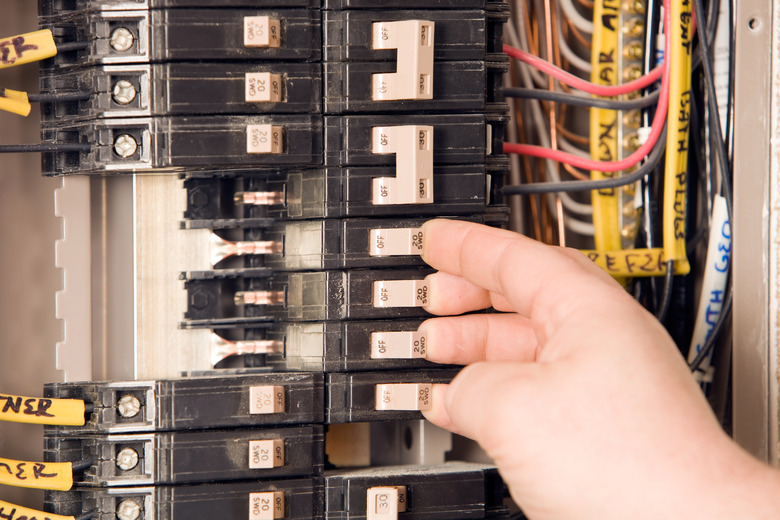The Definition Of A Simple Circuit
We may receive a commission on purchases made from links.
Electric circuits permeate modern life. You find them in household electrical systems, electronics and computer technology, and in automotive systems. They make lights and household appliances work, they power the pumps that supply water to homes, and even your body contains electrical circuits through which muscles and nerves receive signals from the brain. All the types of circuits with which you are familiar, no matter how complex, are sophisticated versions of the simple circuit.
It's not an overstatement to say that people have become so dependent on electricity that the infrastructure of modern civilization wouldn't be able to function without it. That's why everybody should have at least a basic appreciation of how electricity works, and that starts with understanding the simple circuit.
Electricity Flows Like Water
Electricity Flows Like Water
In the natural world, electricity can travel directly from one point to another, which is what happens when lightning strikes. If you want electrical energy to do any work, however, you have to contain it so you can direct it to an electrical device (which is called a load). In a simple circuit, electric current flows through a wire much like water flows through a pipe, moving from a pole with a high concentration of electrons (the negative pole) to one with a low concentration of electrons (the positive pole).
The prime motivating force is the difference in electron concentration between the positive and negative poles. Scientists call this the potential difference or voltage, and it partially determines the magnitude of the current flow. The other determinant is the ability of the wire you use to connect the poles to conduct electricity. This is called resistance, and because copper has very low resistance to electric flow, it's the most common type of wire to use when building a simple circuit.
Building a Simple Circuit
Building a Simple Circuit
The simplest circuit you can build consists of a battery, two lengths of copper wire, and a simple load, such as a light bulb. You connect one wire to one of the battery terminals and the other wire to the other battery terminal, and then you connect both wires to the load. If the load is a light bulb, it will come on as soon as you touch one wire to the socket and one to the nub on the base of the socket provided the battery has sufficient voltage to power it.
The three most important measurable parameters in a simple circuit like this are the voltage of the battery (V), the current flowing in the wire (I), and the resistance of the wire (R). They are related by Ohm's Law, which states that the voltage is equal to the product of current and resistance: V = IR.
A battery is a direct current (DC) power source, but you can also build a simple circuit using an alternating current (AC) power source, such as a coil spinning in a magnetic field, and it will still power the load. In this case, the poles of the power source continuously exchange positions, and the current changes direction every time they do, but Ohm's Law still applies to the circuit.
Series and Parallel Circuits and Beyond
Series and Parallel Circuits and Beyond
There are two ways to add more loads to a simple circuit. One is to cut the wires in various places and insert the loads, making what is called a series circuit. The other is to connect a third wire to one of the main wires, feed that into a load, and use a fourth wire to connect that load back to the main circuit wire. That's called a parallel circuit.
Electricity can only do work when it's flowing, and it can only flow when it has an unobstructed path between the poles of the power source. Most circuits have switches to interrupt the power flow, which allows you to turn the load on and off without disconnecting it. These and a number of other devices that affect voltage and current flow, such as transformers, diodes, capacitors, and resistors, go into the creation of even more complex circuitry.
